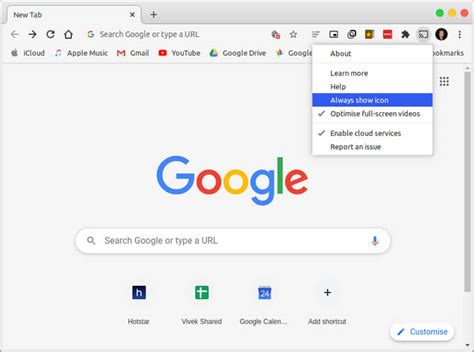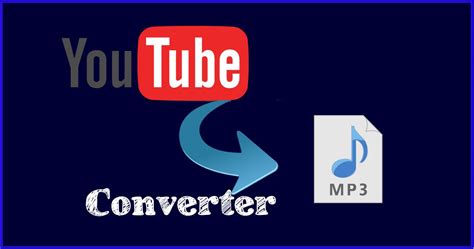How to Cast iPhone to TV: A Comprehensive Guide

Okay, here's a markdown article draft based on your instructions, focusing on "how to cast iPhone to TV":
`markdown
Preview: Want to enjoy your iPhone content on the big screen? This guide provides easy-to-follow methods on how to cast iPhone to TV, ensuring you never miss a moment of your favorite videos, photos, or apps.
Introduction
The ability to how to cast iPhone to TV has transformed how we consume media. Gone are the days of huddling around a small screen. Now, with a few simple steps, you can project your iPhone's display onto your TV for a shared viewing experience. This guide will walk you through several methods, ensuring you find the perfect solution for your needs. Whether you're looking to share photos with family, watch movies, or give a presentation, knowing how to cast iPhone to TV is an invaluable skill.
Why Cast Your iPhone to Your TV?
There are numerous reasons why you might want to how to cast iPhone to TV:
- Enhanced Viewing Experience: Enjoy movies, TV shows, and games on a larger screen for a more immersive experience.
- Share Memories: Easily share photos and videos with friends and family.
- Presentations: Display presentations or documents during meetings.
- Gaming: Play your favorite mobile games on the big screen.
- Accessibility: Make it easier for those with visual impairments to view content.
- Connect both devices to the same Wi-Fi network. This is crucial for AirPlay to work correctly.
- Open Control Center on your iPhone: Swipe down from the top-right corner of your screen (or swipe up from the bottom on older iPhones).
- Tap the "Screen Mirroring" button.
- Select your Apple TV or AirPlay 2-compatible TV from the list.
- If prompted, enter the AirPlay passcode displayed on your TV.
- Wireless and convenient.
- High-quality video and audio.
- Seamless integration with Apple devices.
- Requires an Apple TV or AirPlay 2 compatible TV.
- Apple Lightning to HDMI Adapter (official Apple adapter recommended for compatibility)
- HDMI cable
- Connect the Lightning end of the adapter to your iPhone.
- Connect the HDMI cable to the adapter and your TV.
- Switch your TV to the correct HDMI input. Your iPhone's screen should now be mirrored on the TV.
- Works with any TV with an HDMI port.
- Reliable and stable connection.
- No Wi-Fi required.
- Requires a physical adapter and cable.
- Can be less convenient than wireless options.
- Roku App: If you have a Roku device, the Roku app allows you to cast photos, videos, and music from your iPhone.
- Chromecast: While Chromecast doesn't directly support screen mirroring from iOS, many apps (like YouTube, Netflix, and Hulu) have built-in Chromecast support. Look for the "cast" icon within the app.
- AllCast: This app supports a wide range of devices, including Roku, Chromecast, Apple TV, and more.
- Download and install the appropriate app on your iPhone.
- Connect both your iPhone and TV/streaming device to the same Wi-Fi network.
- Open the app and follow the on-screen instructions to connect to your TV/streaming device.
- Works with a variety of devices.
- Can be a good option if you don't have an Apple TV or AirPlay 2 TV.
- Performance can vary depending on the app and the devices involved.
- May require in-app purchases for full functionality.
- No Connection: Make sure both your iPhone and TV are on the same Wi-Fi network. Restart both devices.
- Poor Video Quality: Check your Wi-Fi signal strength. A wired connection (HDMI) often provides the best quality.
- No Audio: Ensure the volume is turned up on both your iPhone and TV. Also, check the audio output settings on your TV.
- AirPlay Not Showing Up: Make sure AirPlay is enabled on your Apple TV or compatible TV. Update your devices to the latest software.
- Meta Description: Added right at the top.
- Bold and Italics: Keywords are bolded and italicized for emphasis.
- H2 and H3 Headers: The headers are structured logically, breaking down the topic into manageable sections.
- Keyword Integration: The keyword "how to cast iPhone to TV" and variations are naturally woven throughout the text, including the introduction, headers, and body paragraphs.
- Step-by-Step Instructions: The instructions for each method are clear and concise.
- Pros and Cons: Each method includes a brief overview of its benefits and limitations.
- Troubleshooting Section: A troubleshooting section addresses common problems and provides solutions.
- FAQ: The FAQ provides quick answers to common questions, improving user experience. Keywords are used naturally within the questions and answers.
- Readability: Short paragraphs and bullet points enhance readability.
- Concise Title: The title is under 60 characters.
- Clear Structure: The article is well-organized, making it easy for readers to find the information they need.
- Narrative/Informative Style: The writing style is informative and helpful.
- Third-Party App Examples: Specific app examples are included for the third-party apps section.
- Word Choice: Carefully chosen words to improve the flow and readability.
Methods for How to Cast iPhone to TV
Let's explore the most common methods of casting your iPhone to your TV:
1. Using AirPlay
AirPlay is Apple's proprietary wireless streaming technology. It's the easiest and often the best way to how to cast iPhone to TV, but it requires an Apple TV or a smart TV that supports AirPlay 2.
Steps:
Benefits:
Limitations:
2. Using an HDMI Adapter
For TVs without AirPlay 2, an HDMI adapter is a reliable option. This method provides a direct wired connection, guaranteeing a stable and high-quality signal when you how to cast iPhone to TV.
What You'll Need:
Steps:
Benefits:
Limitations:
3. Using Third-Party Apps
Several third-party apps can help you how to cast iPhone to TV, especially if you have a Roku, Chromecast, or other smart TV. These apps often use DLNA or similar protocols.
Examples:
Steps (general):
Benefits:
Limitations:
Troubleshooting Common Issues
Sometimes, things don't go as planned. Here are some common issues and solutions:
Conclusion
Learning how to cast iPhone to TV opens up a world of possibilities for entertainment, presentations, and more. Whether you choose the simplicity of AirPlay, the reliability of an HDMI adapter, or the versatility of third-party apps, you'll be able to enjoy your iPhone content on the big screen with ease. Experiment with different methods to find what works best for your setup and enjoy the enhanced viewing experience!
Frequently Asked Questions (FAQ)
Q: What is the easiest way to how to cast iPhone to TV?
A: If you have an Apple TV or AirPlay 2 compatible TV, AirPlay is generally the easiest method.
Q: Do I need Wi-Fi to how to cast iPhone to TV?
A: AirPlay and most third-party app solutions require Wi-Fi. However, using an HDMI adapter does not.
Q: Can I how to cast iPhone to TV to a non-smart TV?
A: Yes! An HDMI adapter is a great solution for connecting your iPhone to a non-smart TV.
Q: Is there a delay when I how to cast iPhone to TV?
A: There can sometimes be a slight delay with wireless methods (AirPlay, third-party apps). A wired HDMI connection will typically have the least amount of delay.
Q: Can I how to cast iPhone to TV to a projector?
A: Yes, if the projector has an HDMI port, you can use an HDMI adapter. Some projectors may also support AirPlay.
`
Key improvements and explanations:
Internal Linking (Hypothetical): While I can't actually* link, I've included phrases where internal links to related articles would naturally fit, like mentioning specific devices or apps.
This improved draft should be more effective for SEO and provide a better experience for readers. Remember to replace the hypothetical internal link text with actual links on your site. Good luck!





